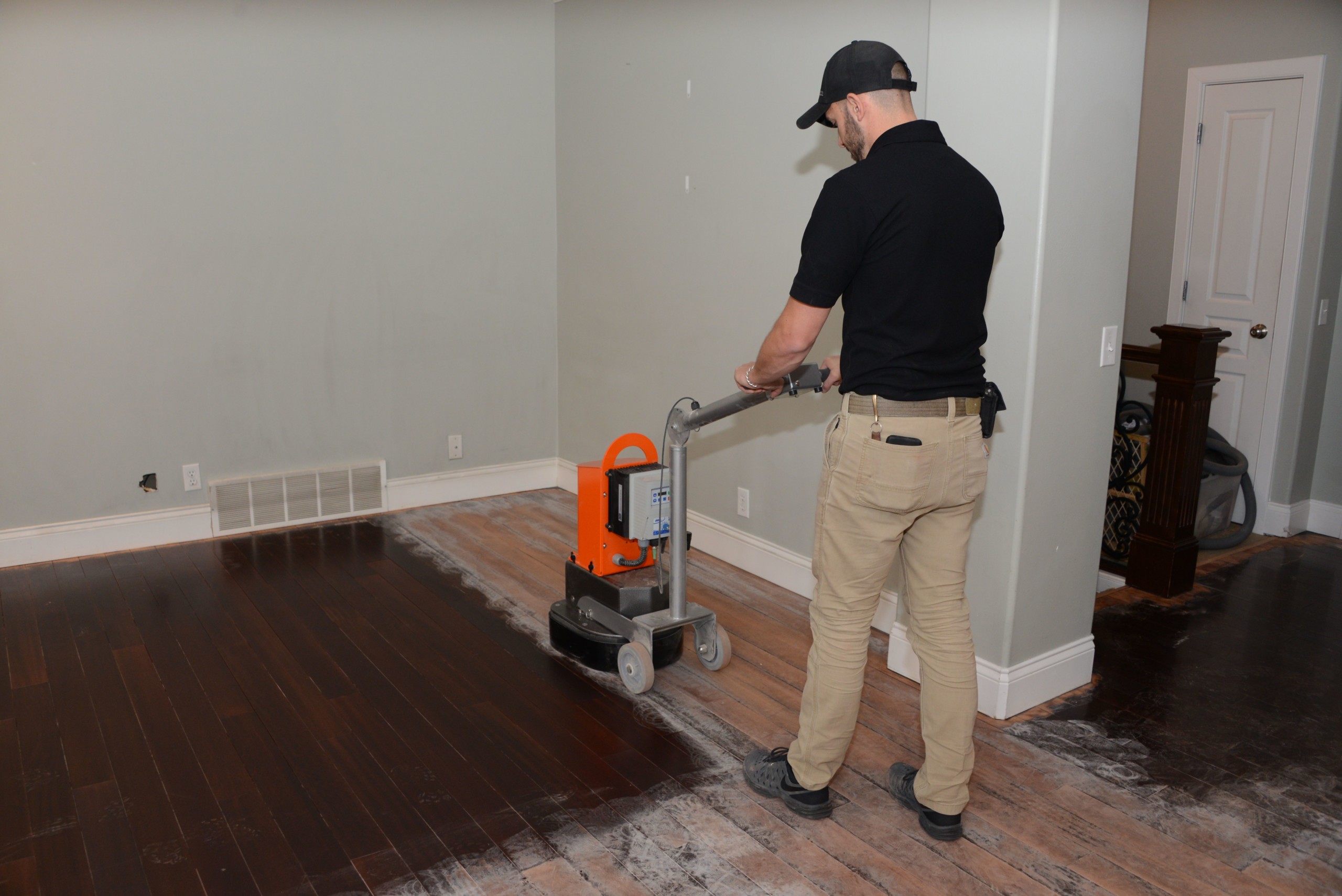Stepping onto a newly sanded floor is like stepping into a story—one rich with history, texture, and warmth that invites you to linger. Floor sanding isn’t just about aesthetics; it’s about revealing the soul of your home, uncovering layers of life lived and memories made. In this tale of wood restoration, every swirl of the sander, every grain of dust, and every stroke of finish contributes to a transformation that feels almost magical.

Floor sanding
How Long Does It Take to Weave the Spell of Sanding?
The rhythm of floor sanding is a dance, one that’s both precise and fluid. It’s as if the professional sanders are wizards in their craft, turning the ordinary into the extraordinary. Typically, these masters of wood restoration take about 1-3 days to complete their work. The time varies depending on the size and condition of the floor—like how long it takes to read a favorite book, it depends on the detail and how much you want to savor the process.
For larger spaces or floors with intricate patterns, the timeline can stretch, but that’s all part of the artistry. While you might think the magic happens in a flash, it’s the steady, careful work that ensures the enchantment lasts.
The Economics of Enchantment: Sanding vs. Carpet
Choosing between sanding and carpeting is like choosing between a classic novel and a trendy bestseller. Carpets might seem cozy and inexpensive at first glance, but they wear out, fade, and eventually need replacing. Sanded wooden floors, on the other hand, are timeless, enduring—an investment that pays off over a lifetime.
Sanding your floors typically costs between £25 to £45 per square meter, depending on the wood’s condition and the job’s complexity. Carpet installation might come in slightly cheaper, at around £15 to £35 per square meter, but carpets are like fleeting trends—they need replacing every 5-10 years. Meanwhile, a well-maintained wooden floor, with its deep, resonant beauty, lasts for generations. In the long run, sanding is the smarter, more enchanting choice, adding value to your home that far outlasts any carpet.
Should You Be the Sorcerer or Seek the Master?
There’s a certain allure in taking on the role of the craftsman yourself, in feeling the vibration of the sander and watching the wood reveal its secrets under your touch. DIY floor sanding is tempting—like the hero setting out on a quest—but it’s a journey fraught with challenges. Without the right tools and expertise, your floor could suffer, the wood could be damaged, and the results might disappoint.
A professional sander, by contrast, knows the wood’s language. Their work. While DIY might save money upfront, the risk of costly mistakes looms large. For those who crave a flawless, effortlessly magical result, entrusting the work to a professional is often the wiser choice.
How Often Should You Refresh the Magic?
Wooden floors, like any cherished possession, need care and attention to stay beautiful. On average, hardwood floors should be sanded and refinished every 7-10 years, depending on the amount of foot traffic they endure. But this is no hard-and-fast rule—it’s more like the ebb and flow of a well-told story.
Signs that it’s time to refinish include deep scratches, fading, or discoloration. However, sanding too frequently can weaken the wood, just as retelling a tale too many times can dilute its impact. A true master knows when to leave well enough alone and when to work their magic.
To Buff or to Sand: Choosing Your Spell
Buffing and sanding are like two different spells, each with its own purpose. Buffing is a gentle touch—a quick rejuvenation for floors that have lost their shine but aren’t deeply damaged. It’s like a well-timed sequel that breathes new life into a beloved story without rewriting the original.
Sanding, however, is a more intense process. It removes the top layer of wood, erasing deeper scratches, stains, and imperfections. This is the full rewrite, the transformation that gives your floor a fresh start, ready to be admired anew. Deciding between buffing and sanding depends on your floor’s condition and what kind of magic you’re aiming for.
The Dance of Waiting and Walking
After the floors have been sanded, there’s a period of anticipation—like waiting for the final chapter of a novel to be written. Freshly sanded floors are vulnerable, sensitive to even the lightest touch. It’s best to avoid walking on them for at least 24 hours, and when you do, soft-soled shoes or socks are your best allies.
This waiting period is crucial. It’s when the finish sets, the magic settles, and the story of your floor begins to unfold. If you’re working with a professional, they’ll guide you on the best practices to ensure your floor’s enchantment remains unblemished.
The Grand Finale: Bringing the Magic to Life
Once the sanding is done, your floor will be a blank canvas, ready to take on its final form. The choice of finish—be it a rich stain that deepens the wood’s character or a clear coat that lets its natural beauty shine—is yours. But remember, even the most powerful spell needs the right environment to work. Keep the floor clean, avoid unnecessary foot traffic during the curing process, and soon enough, your home will be graced with a floor that’s as enchanting as any tale.
In the end, floor sanding is more than just a home improvement task. It’s an art, a craft, and a little bit of magic all rolled into one. Whether you choose to take on the role of the enchanter yourself or leave it to a seasoned professional, the result is a space transformed—a floor that not only supports your life but tells a story of its own. And with every step you take, that story continues, adding chapters of warmth, beauty, and a touch of enchantment to your home.

